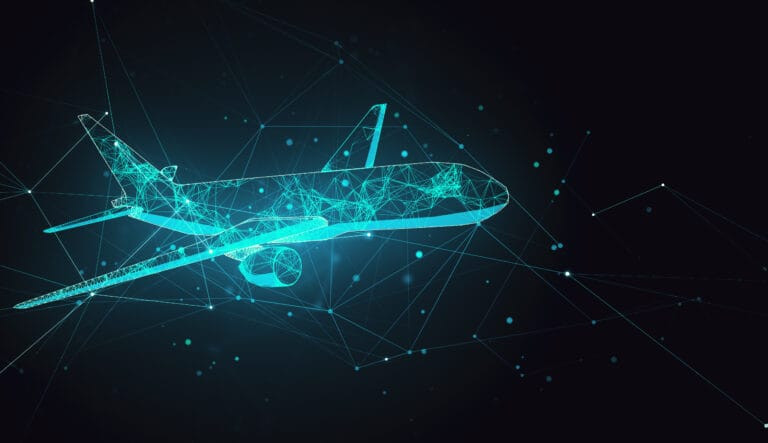AI is poised to revolutionise supply chain logistics by addressing a longstanding challenge that has plagued the industry for decades: the lack of seamless data integration across a vast and fragmented network. Logistics involves coordination between numerous entities—suppliers, carriers, brokers, and drayage providers—each operating with its own systems, processes, and data formats.
For years, the industry has struggled to unify this data into a common language. Efforts such as 10 standards bodies and middleware solutions have attempted to bridge the gap, but none have achieved widespread success. As a result, logistics remains heavily reliant on unstructured, siloed data—emails, Excel files, PDFs—that flood inboxes daily. Critical information is buried in thousands of messages, requiring manual extraction and re-entry into different systems.
This process is not only time-consuming but also introduces errors, delays, and inefficiencies that hinder software performance. AI has the potential to eliminate these bottlenecks by automating data extraction, interpretation, and integration, transforming how logistics operates.
“The information we’re talking about here is critical. It’s not just routine data—it’s invoices requiring payment, essential documents for customs clearance, or shipment details that, if missed, can cause major disruptions. If a customs document doesn’t arrive on time, a shipment gets stuck. If a booking is changed—say, a terminal or airport gate is reassigned—but that update is buried in a flood of emails, the shipment might arrive with no plane or truck ready to move it,” Greg Kefer, Chief Marketing Officer of Raft, stated.
“When this happens, logistics teams are forced into crisis mode, scrambling to locate shipments and arrange last-minute solutions—often at a significant cost. This constant firefighting isn’t just a daily operational headache; it translates into staggering financial waste, potentially tens of billions of dollars across the industry. The root of the problem is both simple and complex: critical information is trapped in unstructured, siloed communication channels, leading to inefficiencies that ripple through the entire supply chain.”
The next generation
One of the biggest challenges in logistics today is attracting new talent—there simply aren’t enough young professionals entering the field. The next generation of logistics professionals grew up with smartphones, voice commands, and automation. They aren’t used to manually typing everything, let alone dealing with outdated processes like reading emails, handling paper documents, and manually entering data into 30-year-old systems. That’s not dynamic or engaging.
“To attract and retain this new workforce, expectations need to change. Many younger professionals who started their careers in the Internet age are now moving into leadership roles, where they have the authority to drive change. And change can’t wait—companies need to invest in modernising their systems now rather than sitting on the sidelines,” Kefer said.
“More importantly, this transformation isn’t just about internal operations. Customers— whether they’re beneficial cargo owners or other stakeholders—are going to demand it. They won’t accept delays, missed shipments, or overcharges caused by outdated processes and disorganised data. They will choose providers that are technologically advanced, and in today’s world, being technologically advanced means embracing AI.
“AI actually creates more rewarding jobs. Think about it—if you work in accounts payable or finance, do you really want to spend your day manually entering data and sifting through emails? Of course not. You’d rather focus on higher-value, strategic tasks. “The fear that AI will take jobs is understandable, but history shows that innovation has always reshaped the workforce, not eliminated it. From steam engines to industrial automation, new technology has disrupted industries, but it has also created better opportunities in the process.”
Wider applications
AI has countless functions across logistics, but specifically, it is able to tackle one of the biggest pain points: unstructured email data – a critical area affected by this issue is invoice processing. For a large freight forwarder managing billions of dollars in airfreight annually, handling invoices manually is a massive burden. These invoices flood inboxes via email, requiring employees to manually extract, review, and input data into transportation management systems (TMS).
“Over time, 50 percent, then 70 percent, then perhaps 90 percent of invoices can be processed automatically—without human intervention— while also updating the TMS in real time. This not only saves an enormous amount of time but also improves cash flow efficiency.
“One of our clients put it best: their business has grown two and a half times, yet their workforce has remained the same. Instead of spending time manually entering data, their employees focus on resolving complex issues and providing better customer service. And let’s be honest—no one enjoys repetitive data entry. AI isn’t about replacing jobs; it’s about making them better. Who wants to be a data clerk? No one. Instead of fearing AI, we should embrace how it can enhance efficiency, free up talent for higher-value tasks, and ultimately improve the entire logistics industry.
“For the logistics industry, AI has the potential to move us beyond constant firefighting. By solving the data problem and providing structured, reliable information, AI can finally unlock the full potential of logistics software. This shift won’t just improve efficiency—it will elevate the entire industry, reducing costs and benefiting everyone involved.”
Reassuring change
With the rapid advancements in AI and automation, companies do risk being overwhelmed as they’re still figuring out how to navigate this shift, especially in areas like invoicing and customs processing. Take customs, for example. Creating a customs entry requires invoices, packing lists, bills of lading, and other documents—often arriving in different formats and scattered across emails. Another critical area is bookings.
While bookings are often made via EDI, the actual confirmation—containing key departure details—still comes via email. If that email is missed, a shipment could be delayed by a week, which is disastrous for a retailer expecting inventory. Beyond these back-office inefficiencies, automation is transforming physical logistics. Warehouses have used sensor grids and robotic pickers for years, seamlessly moving goods to shipping lanes. However, resistance exists, particularly from longshoremen who fear full automation at ports. While society may not be ready for fully automated ports and airports, smarter automation can still significantly improve efficiency without eliminating human oversight.
“Automation creates an entire ecosystem of efficiency. Take air travel, for instance. Every time I go through Heathrow, the immigration process feels like a glimpse into the future. As someone based in San Francisco, I travel to London often, and now, instead of waiting in long lines, you just look at a screen, scan your passport, and you’re through—no stamps, no chaos. Facial recognition has completely streamlined the process.
“This same kind of optical technology has huge potential in freight. Imagine a system that can instantly scan a carton and recognise its contents without needing manual input. That’s where visibility becomes the real game-changer. “If we can apply this level of tracking and automation to logistics—just like with baggage tracking or biometric immigration control—we get closer to that ultimate goal: complete, real-time supply chain visibility. That’s the true pot of gold at the end of the rainbow.
“This isn’t about replacing people; it’s about replacing inefficient, outdated systems with smarter, more responsive technology. “The real opportunity is in fixing the broken systems that create unnecessary costs and delays across the supply chain.”



